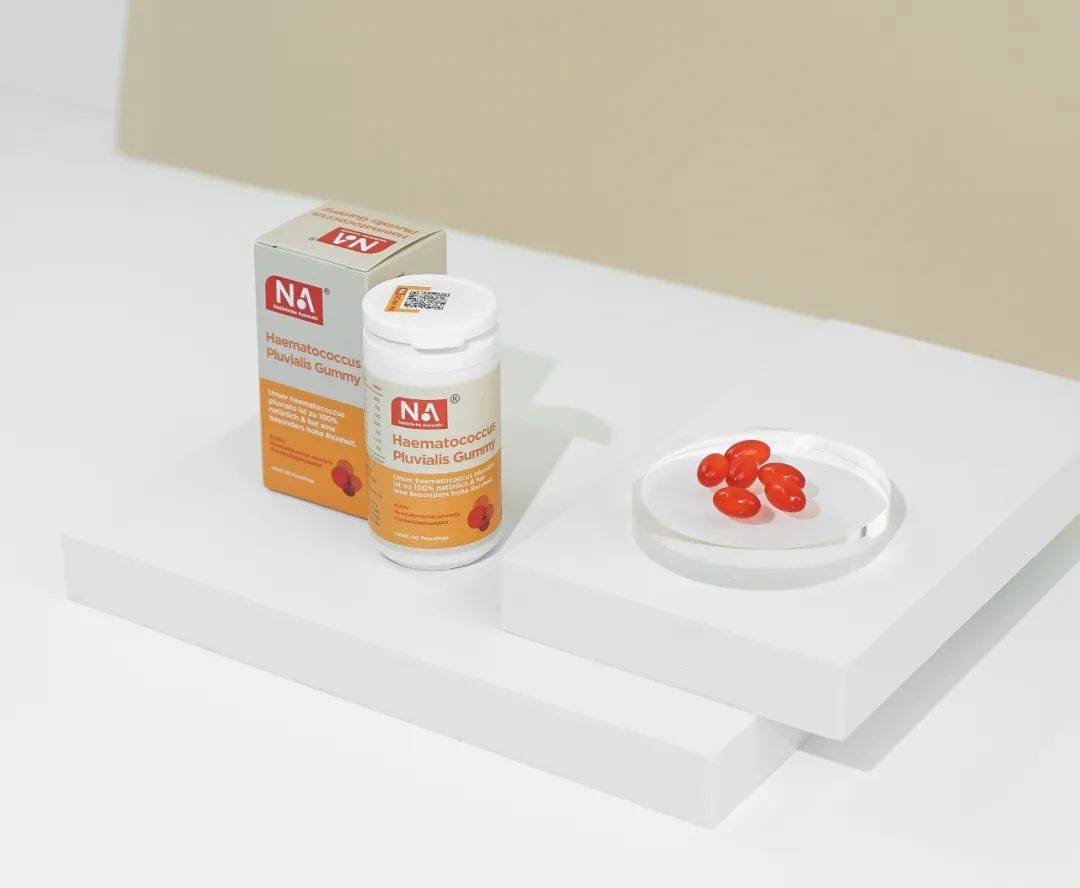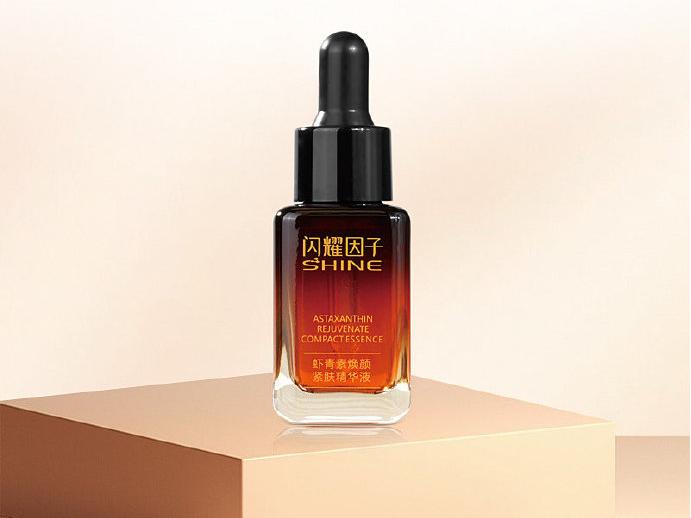Is Turmeric Good for Kidney?
Curcumin is a polyphenolic compound extracted from the rhizome of the Indian spice turmeric. It has good thermal stability and coloring properties, and is one of the world's best-selling natural food colors. Currently, curcumin is widely used as a food additive in the food industry. In traditional Chinese medicine, curcumin is often used to repel mosquitoes, dispel wind and promote blood circulation, improve blood circulation, and relieve menstrual pain, among other things, and has a good health care effect. Curcumin has attracted much attention due to its profound medicinal value and biological activity. Research both at home and abroad has found that curcumin has biological activities such as antioxidant, anti-inflammatory, anti-tumor, and anti-microbial effects [1], and many clinical studies have shown the effectiveness and safety of curcumin in the prevention and treatment of various human diseases [2].
In recent decades, the use of nutraceuticals and functional foods to prevent and treat human diseases has become increasingly popular. Curcumin has the characteristics of being widely distributed, highly medicinal and universally applicable. Scholars at home and abroad have conducted extensive research on the biological activity and pharmacological effects of curcumin. Curcumin is not only used in the food industry, but is also widely used in the fields of medicine and daily chemicals. A large number of studies have shown that curcumin is effective against a variety of diseases [3], as shown in Figure 1. Despite its obvious pharmacological effects and safety, curcumin has not yet been approved for use as a drug. Research on curcumin should not only focus on its good functional activity, but also on understanding its mechanism of action and possible potential toxicity. This article summarizes the research progress on the several functional activities and mechanisms of curcumin, and summarizes and explores the research results on its toxicity.
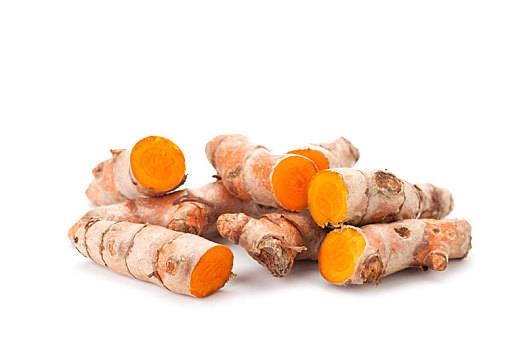
1 Physicochemical properties of curcumin
The chemical structure of curcumin contains two o-methylated phenols and a β-diketone functional group (see Figure 2 for the chemical structure). Its structural characteristics are related to its biological activity and the degree of toxicity [4]. Curcumin has a melting point of 180 °C to 183 °C, and is an orange-yellow crystalline powder with a characteristic odor at room temperature. It is easily soluble in organic solvents and poorly soluble in water and ether. It is unstable to light and easily decomposes. In addition, the pH of the solution has a significant effect on the stability of curcumin. Curcumin is stable in acidic (pH ≤ 5) solutions. As the pH of the solution the degradation rate of curcumin significantly accelerates, and its degradation reaction is a first-order kinetic process [5].
Curcumin has significant photochemical properties and can induce apoptosis in cells, making it a new type of photosensitizer that is highly effective and low in toxicity [6]. Curcumin is sensitive to solvents, has a maximum light absorption in liquids, and has a different spectrum in different solvents: 408 nm to 434 nm for absorption and 460 nm to 560 nm for emission [7].
The oral bioavailability of curcumin is low [8-9]. Researchers at the University of Leicester in the UK conducted a clinical trial on the oral dosage of curcumin. The researchers provided curcumin orally (180 mg/d) to patients with advanced colorectal cancer. After 4 months of continuous administration, it was found that this dose of curcumin had almost no adverse reactions in patients, but the bioavailability was very low. In rats given a high dose of curcumin orally (2% curcumin in the diet, equivalent to 1.2 g/kg of curcumin given orally), only nanomolar levels of curcumin were detected in plasma, liver and colonic mucosal tissue [10].
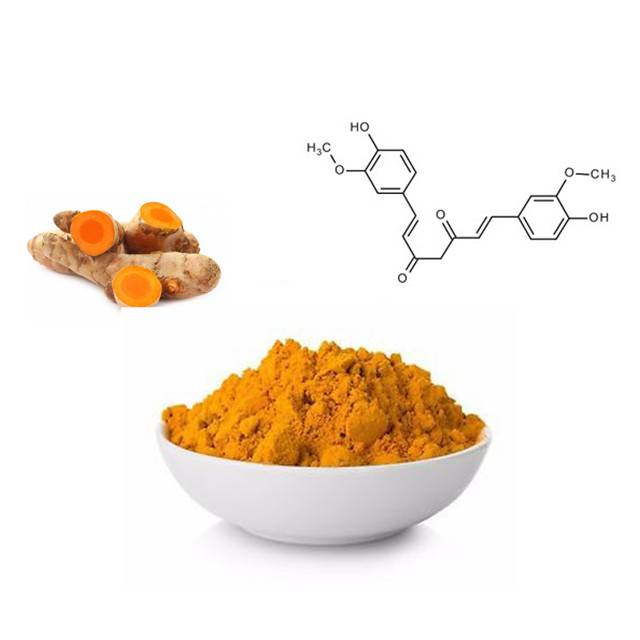
2 Functional properties and mechanism of action of curcumin
2.1 Anti-tumor effects and mechanism studies
In 1987, Kuttan et al. conducted the first clinical trial of curcumin [11]. Since then, researchers have conducted many clinical trials using curcumin and found that curcumin has the ability to affect multiple targets, enabling it to exert significant activity against different cancer types [12]. Curcumin has broad-spectrum anticancer properties and is significantly active against breast cancer, lung cancer, gastric cancer, colon cancer, prostate cancer, multiple myeloma, pancreatic cancer and leukemia [13-14]. Because of its advantages of low toxicity and high pharmacological efficacy, it has great application value in cancer prevention and antitumor therapy. It has been reported that high-purity bisdemethoxycurcumin can significantly inhibit angiogenesis in tumor tissue and is expected to become an anti-tumor or anti-human immunodeficiency virus (HIV) drug [15].
Curcumin exerts its anti-tumor effect mainly by inducing apoptosis in tumor cells and regulating cell survival pathways. For example, bisdemethoxycurcumin can inhibit the proliferation of B16-F10 melanoma cells, thereby inducing apoptosis in B16-F10 melanoma cells [16]. Curcumin can reduce the formation of nitrite compounds in cancer cells, block the cell cycle, and cause a variety of tumor cells to accumulate in the S phase (DNA replication phase), unable to enter the next proliferation cycle, and there is a dose-effect relationship [17]. Proliferating cells are more sensitive to the killing effect of curcumin, and it is advantageous to kill proliferating cells to induce apoptosis, such as activating the caspase cascade reaction through the mitochondria to induce apoptosis in human leukemia cell lines and lymphoma cell lines [18]. In addition, in clinical trials for the treatment of malignant lesions such as bladder cancer, oral leukoplakia, and cervical intraepithelial neoplasia, it was found that curcumin treatment can improve histological precancerous lesions [19].
Angiogenesis plays a crucial role in tumor growth, and anti-angiogenesis has become a research hotspot in tumor treatment. Many plant extracts have been shown to have anti-tumor angiogenic effects [20-21]. Studies have shown that curcumin has anti-tumor angiogenic and metastatic effects [22].
In addition, curcumin has chemosensitizing and radiosensitizing properties. The combination of curcumin and radiation can effectively enhance the apoptosis of tumor cells. A study compared the effects of curcumin, radiation, and the combination of curcumin and radiation on cell cycle arrest, mitochondrial membrane potential changes, and apoptosis in human retinal glioma WERI-Rb-1 cells. The results showed that compared with curcumin treatment alone, the combination of curcumin and radiation can significantly reduce cell activity, and low doses of radiation can enhance curcumin-induced apoptosis [23]. treatment, curcumin combined with radiation can significantly reduce cell activity, and low doses of radiation can enhance curcumin-induced apoptosis [23]. Li Gang et al. [24] used human renal cancer cells ACHN as the research object and found that curcumin has a radiosensitizing effect on human renal cancer cells ACHN, which is beneficial to improving the radiotherapeutic effect of renal cancer. In addition, low doses of curcumin can block the G2/M phase of the radiosensitive U87 cells, thereby exerting a radiosensitizing effect [25].
2.2 Anti-fibrosis effect and mechanism research
Fibrosis is a complex pathological change involving multiple cells, factors and pathways, and is the main cause of disability and death in many diseases. Curcumin has the effect of preventing fibrosis in many organs, and research on its mechanism of action against fibrosis provides an important basis for clinical drug development. The anti-fibrosis process of curcumin can be summarized as inhibiting the abnormal proliferation and accumulation of extracellular matrix, as well as protecting the corresponding organs and tissues through the anti-inflammatory effect of curcumin [26].
The potential antifibrotic effect of curcumin has been reported. For example, Zhao Zhen-dong [27] used dimethylnitrosamine to induce a rat liver fibrosis model. After treatment with curcumin, the pathological changes in the liver tissue were observed, various indicators of the rat liver tissue were tested, and reverse transcription-polymerase chain reaction (RT-PCR) was used to detect the expression of platelet-derived growth factor receptor β (PDGFRβ) recombinant protein and extracellular regulated protein kinases 1 (ERK1) mRNA in the liver tissue of fibrotic rats. elet derived growth factor receptor, PDGFRβ) recombinant protein and the expression of extracellular regulated protein kinases 1 (ERK1) mRNA. The results showed that curcumin treatment can significantly improve the pathological damage of liver fibrosis in rats, and its mechanism of action is mainly related to the inhibition of platelet-derived growth factor (PDGF-BB) and the expression of the receptor ERK1.
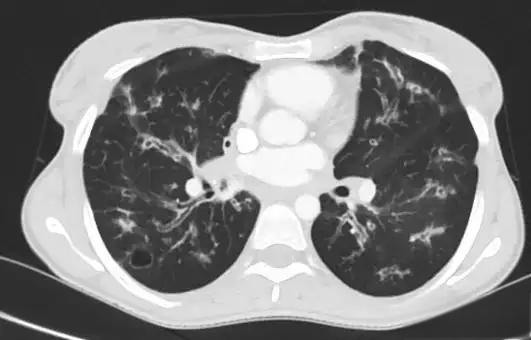
Sreedevi Avasarala et al. [28] studied the antifibrotic effect of curcumin in a mouse model of viral acute respiratory distress syndrome through histological and biochemical analysis, and found that curcumin regulates myofibroblast fibrosis in mice by inhibiting the expression of α-smooth muscle actin and tendon protein-C, key markers of myofibroblast activation. Xu S et al. [29] found that in a rat intestinal fibrosis model induced by 2,4,5-trinitrobenzenesulfonic acid (TNBS), oral administration of curcumin can significantly improve intestinal fibrosis by increasing the expression of peroxisome proliferator-activated receptor gamma (PPARγ) and E-cadherin and reducing the expression of α-smooth muscle actin, fibronectin and connective tissue growth factor (CTGF) expression, significantly improving intestinal fibrosis.
Fibrosis caused by hyperglycemia plays an important role in kidney disease and cardiomyopathy. Renal fibrosis is generally considered to be the activation and proliferation of mesenchymal regions and the excessive synthesis and accumulation of extracellular matrix components caused by fibronectin and collagen. Some curcumin derivatives have been shown to inhibit inflammation and fibrosis induced by hyperglycemia. Chen H et al. [30] effectively inhibited inflammation, hypertrophy and fibrosis caused by hyperglycemia by oral administration in vivo, improved fibrosis and pathological changes in the kidney and heart tissues of diabetic mice, and concluded that the anti-fibrosis activity of curcumin derivatives is related to the inhibition of the protein kinase B (protein ki-nase B, PKB) signaling pathway . Transforming growth factor-β (TGF-β) and connective tissue growth factor (CTGF) are recognized as key factors in fibrosis. In studies on diabetic model rats, curcumin can inhibit the expression of TGF-β, CTGF and their receptors, thereby achieving an anti-fibrotic effect.
In addition, some researchers have explored the effect of curcumin on myocardial fibrosis. In the experiment, hematoxylin-eosin staining (HE) was used to observe the pathological damage and fibrosis of mouse myocardial tissue. The results showed that high concentrations of curcumin can significantly reduce the degree of myocardial fibrosis in mice and significantly reduce the expression of type III collagen in myocardial tissue. Finally, it was confirmed by western blot that curcumin can effectively inhibit angiotensin (angiotensin II, ANG II)-induced myocardial fibrosis in mice by activating autophagy in myocardial tissue [31].
2.3 Research on the nephroprotective effect and mechanism
Epidemiological data show that acute or chronic renal failure has become a serious health and economic problem worldwide. Curcumin can play a very important role in preventing kidney damage and protecting renal function. Research on its application in diabetes shows that curcumin can reduce inflammatory kidney response by inhibiting pro-inflammatory cytokines such as tumor necrosis factor-α and monocyte chemotactic protein. In addition, it has been shown to improve diabetes by reducing the infiltration of renal macrophages and the expression of pro-fibrotic cytokines such as TGF-β, inducible nitric oxide synthesis (iNOS) and cyclooxygenase-2 (COX-2) [32].
Nabavi S F et al. [33] evaluated the nephroprotective effect of curcumin on sodium fluoride-induced rats. One week before the induction of fluoride administration, the experimental group rats were given curcumin (10 mg/kg and 20 mg/kg, intraperitoneally), and the control group rats received vitamin C (10 mg/kg) as a standard antioxidant. After one week, the lipid peroxidation levels in kidney homogenates, superoxide dismutase activity, catalase and glutathione levels were measured, and serum samples were examined for creatinine, serum urea and blood urea nitrogen levels. The results showed that before fluoride was administered, curcumin and vitamin C treatment could normalize serum creatinine, serum urea and blood urea nitrogen levels in rats.
In addition, curcumin and vitamin C prevented the decrease in antioxidant enzymes and the imbalance in lipid peroxidation levels. The curcumin treatment in the experiment showed significant nephroprotective effects.
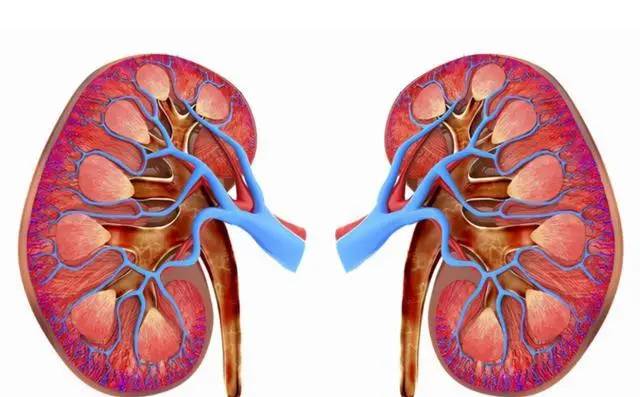
Cadmium is a nephrotoxic pollutant with a low metabolic rate. After entering the body, it accumulates in the epithelial cells of the proximal tubules of the kidney. When the threshold concentration of 150 μg/g~200 μg/g tissue is reached, it can cause extensive dysfunction of the proximal tubules [34]. After entering the body, cadmium can produce reactive oxygen species, which can lead to oxidative damage in the body. Curcumin has a protective effect on cadmium-induced kidney damage. Gong Pin et al. [35] induced kidney damage in mice by cadmium and found that cadmium toxicity caused kidney damage and functional impairment in mice. Curcumin can effectively reduce cadmium-induced oxidative damage and protect the kidneys. This may be because curcumin can induce the production and activation of antioxidant enzymes, partially acting as superoxide dismutase (SOD) and catalase from micrococ- cus lysodeiktic (CAT). In addition, VladishvEybl et al. [36] found that curcumin can improve lipid peroxidation in various tissues without changing the distribution of cadmium in liver, kidney and brain tissues, and can protect the kidneys.
2.4 Research on the effect and mechanism of preventing obesity
Curcumin has potential effects on the angiogenesis, differentiation and apoptosis of adipocytes. Its inhibitory effect on angiogenesis in adipose tissue and lipid metabolism in adipocytes helps to reduce body fat and weight gain. Jeong Y J et al. [37] found that an extract of curcumin has an anti-obesity effect on adipocytes and obese mice. In the study on adipocytes, the inhibitory effect of CAE on adipocyte differentiation and lipogenesis was determined in 3T3-L1 cells using a differentiation-inducing medium. For the study on obese mice, the extract was added to a mouse feed containing 60% fat, and after 7 weeks of continuous feeding, the mice were dissected and the levels of total cholesterol, low-density lipoprotein cholesterol and triglycerides were measured. It was found that the increase in total cholesterol, low-density lipoprotein cholesterol and triglycerides was highly inhibited in the presence of the extract, which had an anti-obesity effect and that the mechanism of this anti-obesity effect is related to the down-regulation of genes involved in adipocyte differentiation and lipogenesis.
In further research, Kuroda M et al. [38] found that the ethanol extract of curcumin can promote the differentiation of human adipocytes, and inhibit adipocyte differentiation by activating the receptor γ through peroxisome, and binding to ligands in adipocytes. In vitro studies have confirmed that curcumin can significantly reduce serum cholesterol and affect the expression of two key transcription factors in fat formation and production. The reason curcumin reduces body weight is that it can inhibit adipocyte differentiation and promote adipocyte apoptosis [39].
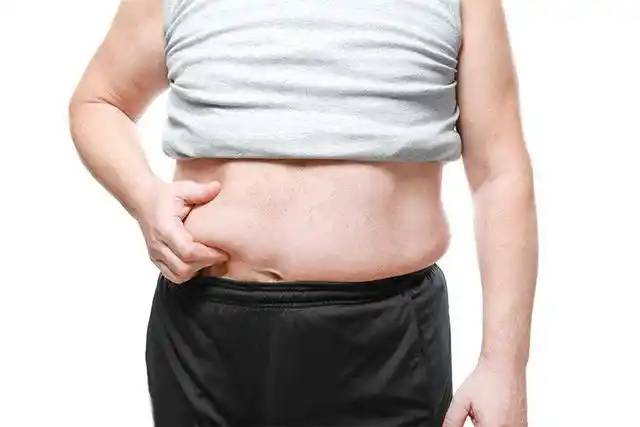
Obesity often leads to cardiovascular disease [40]. Curcumin has antioxidant, anti-inflammatory, anti-obesity and anti-fibrosis effects, and can significantly alleviate myocardial damage caused by obesity [41]. Curcumin may also be used to treat obesity-related heart disease.
2.5 Anti-inflammatory effects and mechanism studies
Curcumin has a good relieving effect on acute or chronic inflammation in animal and human models. Curcumin can improve inflammatory diseases such as inflammatory bowel disease, rheumatoid arthritis, and myocarditis by inhibiting the secretion of pro-inflammatory cytokines. V Vetvicka et al. [42] studied the effects of curcumin on cytokines such as interleukin 4 (IL-4), interleukin 10 (IL-10), interferon-γ (IFN-γ), and tumor necrosis factor-α (TNF-α) in vitro and in vivo. TNF-α is a major cytokine involved in inflammation. It was found that daily oral administration of curcumin can help reduce experimental IFN-γ) and tumor necrosis factor-alpha (TNF-α). TNF-α is a major cytokine involved in inflammation. Studies have found that daily oral administration of curcumin can help reduce TNF-α, alanine aminotransferase (ALT) and aspartate aminotransferase (AST) levels in the serum of experimental mice, significantly reducing the inflammatory response of hepatotoxicity .
Numerous clinical trials have demonstrated the anti-inflammatory effect of curcumin in the treatment of osteoarthritis. Chin K Y [43] summarized the anti-osteoarthritis effect of curcumin from clinical studies. Curcumin can improve the pain, physical function and quality of life of osteoarthritis patients after administration. The effect of curcumin on osteoarthritis can be attributed to its ability to prevent cartilage cell apoptosis caused by inflammation, inhibit the release of proteoglycans and metalloproteinases, and the expression of expression of cyclooxygenase, prostaglandin E-2 and inflammatory cytokines in chondrocytes.
Curcumin can reduce the activity of reactive oxygen species-producing enzymes, inhibit the formation of nitrogen oxides in macrophages and the expression of protein kinases after an inflammatory response [44]. Curcumin can inhibit the transmission of signal pathways in body cells and reduce the release of inflammatory cytokines, thereby reducing pain and discomfort in patients. Zhao Yun et al. [45] used human vascular endothelial cells as a cell model to study the effect of curcumin on vascular endothelial cell inflammation. They found that curcumin intervention significantly inhibited the expression of the inflammasome activation gene NRLP3, thereby intervening in the occurrence of cellular inflammatory responses. In addition, curcumin has a strong broad-spectrum antifungal effect, and has a strong inhibitory effect on Trichophyton rubrum, Trichophyton mentagrophytes, Epidermophyton floccosum, Candida albicans, Rhizoctonia solani, Phytophthora infestans and Blumeria graminis, and can be used to treat skin inflammation [46].
3 Toxicological evaluation of curcumin
With the development of the food industry, visual appearance has gradually become one of the important factors for consumers to choose products, and food colorants have become one of the indispensable additive categories in the food industry. Despite the important role played by food colorants, there is increasing concern about the adverse effects of food additives on human health. Curcumin is a “double-edged sword”. Its anti-tumor and antioxidant effects may be accompanied by pro-oxidant effects. In addition, studies have shown that curcumin may cause carcinogenic effects under certain conditions [47]. According to reports from the Food and Agriculture Organization of the United Nations (FAO/World Health Organization, WHO) and the European Food Safety Authority (EFSA), the acceptable daily intake (ADI) of curcumin is 0–3 mg/kg. Numerous researchers have assessed the safety and efficacy of curcumin.
Toxicity tests on curcumin have found that the results of studies on toxic effects are inconsistent, the mechanism of action cannot be conclusively determined, and the absorption and metabolic processes of curcumin in the body are not fully understood. Previous studies have reported that curcumin has no significant subchronic toxic damage in animal toxicity experiments, and it has no potential mutagenic or teratogenic effects [48]. For example, Krishnaraju et al. [49] conducted a toxicological evaluation of the safety of demethylcurcumin (DC) through acute oral administration, acute dermal administration, primary skin and eye irritation, and a dose-dependent 90-day subchronic toxicity study. In female Sprague-Dawley rats, DC was found to have an acute oral median lethal dose (LD50) > 5 000 mg/kg, acute dermal LD50> 2 000 mg/kg, and no weight changes or adverse effects were observed after autopsy, which proves the broad-spectrum safety of demethylcurcumin. Dan- dekar P et al. [50] conducted a toxicological assessment of curcumin-loaded nanoparticles, and the acute toxicity study found that the dose of 2,000 mg/kg was non-toxic, and the subacute toxicity study demonstrated the safety of long-term administration of curcumin at a commonly used therapeutic dose of 100 mg/kg and twice the therapeutic dose.
However, high doses of curcumin have also been found to be carcinogenic in female rats and both female and male mice [51]. Curcumin liposomes have not been observed to be toxic in in vitro pancreatic and colorectal cancer cell lines and in xenograft mouse models at doses up to 40 mg/kg. However, a preclinical toxicology study in dogs with curcumin liposomes showed dose-dependent hemolysis at doses ≥ 20 mg/kg [52]. Sharma et al. [53] observed an average plasma concentration of 11 nmol/L after oral administration of 3.6 g curcumin in patients with cancer. In another clinical trial, plasma levels reached 45 times [54]. The reason for these differences is unknown. Therefore, further research is needed on the potential toxic effects of curcumin and the conditions under which toxicity is exerted.
4 Outlook
Curcumin is a natural antioxidant and anti-inflammatory agent with good development and application prospects due to its wide availability and low cost. In recent years, there has been an increasing number of studies on curcumin and its derivatives, which has laid a good foundation for the development and utilization of curcumin. The bioavailability of curcumin has long been considered a potential cause limiting its functional activity. So far, various drug delivery routes have been studied to improve the bioavailability of curcumin, including solid dispersions, lipid nanoparticles, and complexation of microemulsions, which are expected to further improve the bioavailability and functional application of curcumin. In addition, in terms of the clinical application of curcumin, issues such as the safe dosage for use and the body's absorption rate of curcumin also require more thought and research.
Reference:
[1] Zhu J, Sanidad K Z, Sukamtoh E, et al. Potential roles of chemical degradation in the biological activities of curcumin [J]. Food and function, 2017, 8(3): 907-914
[2] Kocaadam B, S,anlier N. Curcumin, an active component of turmeric (Curcuma longa), and its effects on health [J]. Critical Reviews in Food Science and Nutrition, 2017, 57(13): 2889-2895
[3] Kunnumakkara A B, Bordoloi D, Padmavathi G, et al. Curcumin, the golden nutraceutical: multitargeting for multiple chronic diseases[J]. British Journal of Pharmacology, 2017, 174(11): 1325-1348
[4] Hu Jing and Li Li. Research status of the pharmacological effects of curcumin. Journal of Laboratory Medicine and Clinical Medicine, 2007, 4(12): 1186-1187
[5] Wan Hong, Zhao Yi, Han Gang, et al. Study on the stability of curcumin under different conditions [J]. China Medical Innovation, 2009, 6(16): 17-18
[6] Crivello J V, Bulut U. Curcumin: A naturally occurring long-wave- length photosensitizer for diaryliodonium salts[J]. Journal of Polymer Science Part A: Polymer Chemistry, 2005, 43(21): 5217-5231
[7] Pouliquen D L. Curcumin: Synthesis, Emerging Role in Pain Man - agement and Health Implications[M].US: Nova Science Publishers, 2014
[8] Xiang Minghua, Zhai Guangxi. Research progress of curcumin oral absorption preparations [J]. Pharmaceutical Research, 2017, 36(2): 104-107
[9] WahlstrmB, Blennow G. A study on the fate of curcumin in the rat[J]. Acta Pharmacologica Et Toxicologica, 2009, 43(2): 86-92
[10] Sharma R A, Steward W P, Gescher A J. Pharmacokinetics and pharmacodynamics of curcumin[M]//The molecular targets and ther- apeutic uses of curcumin in health and disease. Boston, MA: Springer , 2007: 453-470
[11] Kuttan R, Sudheeran P C, Josph C D. Turmeric and curcumin as topical agents in cancer therapy[J]. Tumori Journal, 1987, 73(1): 29- 31
[12] Gupta S C, Patchva S, Koh W, et al. Discovery of curcumin, a com- ponent of golden spice, and its miraculous biological activities [J]. Clinical and Experimental Pharmacology and Physiology, 2012, 39(3): 283-299
[13] Yu Jun, Wei Jie. Natural Medicinal Chemistry Research and New Drug Development: Detailed Processing [J]. Medicine, 2016(11): 19
[14] Wang Jiajia, Xu Hongxia. Curcumin and tumors: from basic to clinical [J]. Journal of Oncology and Metabolism, 2016, 3(2): 82-87
[15] Lu Feng, Zhou Ruili. A review of the biological activity and application of curcumin [J]. Grand View Weekly, 2011(30): 29
[16] Zeng Xiaofei, Ma Ruidong, Shang Guansheng, et al. Effects of bisdemethoxycurcumin on the proliferation and apoptosis of melanoma B16-F10 cells [J]. Journal of Practical Medicine, 2016, 32(1): 50-53
[17] Meng Xiuxiang, Gong Jing, Sun Hongdan, et al. Observation of the in vitro effects of curcumin on leukemia cells and its phase effects [J]. Leukemia & Lymphoma, 2000, 9(3): 147-150
[18] Li Nian, Shao Shuli. Research progress on the mechanism of curcumin-induced apoptosis in tumor cells [J]. Gaoshi Science Journal, 2007, 27(1): 27-30
[19] Zhang W, Chen C, Shi H, et al. Curcumin is a biologically active copper chelator with antitumor activity [J] . Phytomedicine, 2016, 23(1): 1-8
[20] Lin S, Lai T C, Lam K, et al. Anti-angiogenic effect of water extract from the fruiting body of Agrocybe aegerita[J]. LWT-Food Science and Technology, 2017, 75: 155-163
[21] Lin S, Hu J, Zhou X, et al. Inhibition of vascular endothelial growth factor-induced angiogenesis by chlorogenic acid via, targeting the vascular endothelial growth factor receptor 2 -mediated signaling pathway[J]. Journal of Functional Foods, 2017, 32: 285-295
[22] Gong C, Deng S, Wu Q, et al. Improving antiangiogenesis and anti- tumor activity of curcumin by biodegradable polymeric micelles[J]. Biomaterials, 2013, 34(4): 1413-1432
[23] Xie B, Li Z, Zhou Y. The radiosensitizing effect of the traditional Chinese medicine extract curcumin on human retinal glioma cells. Advances in Ophthalmology, 2016, 36(5): 431-434
[24] Li Gang, Wang Zi-Ming, and Zhong Tie. The radiosensitizing effect of curcumin on human renal cancer ACHN cells and its mechanism. Journal of Xi'an Jiaotong University: Medicine Edition, 2011, 3(3): 299-302
[25] Ma Jianfen. Study on the radiosensitizing effect and mechanism of curcumin on the U87 glioma cell line [D]. Suzhou: Soochow University, 2013
[26] Han Guixiang, Li Qingrong, Zhu Xuanxuan. Research progress on the antifibrotic effect of curcumin [J]. Southwest National Defense Medicine, 2016, 26(1): 102-104
[27] Zhao Zhen-dong. Research on the anti-hepatic fibrosis effect and mechanism of curcumin [J]. Chinese Journal of Experimental Pharmacology, 2010, 16(3): 122-125
[28] Avasarala S, Zhang F, Liu G, et al. Curcumin Modulates the Inflam - matory Response and Inhibits Subsequent Fibrosis in a Mouse Mod - el of Viral -induced Acute Respiratory Distress Syndrome [J]. Plos One, 2015, 10(8): 396
[29] Xu S, Jiang B, Wang H, et al. Curcumin suppresses intestinal fibro - sis by inhibition of PPARγ-mediated epithelial-mesenchymal tran - sition[J]. Evidence-Based Complementary and Alternative Medicine, 2017,2017: 1-12
[30] Chen H, Yang X, Lu K, et al. Inhibition of high glucose-induced in - flammation and fibrosis by a novel curcumin derivative prevents re - nal and heart injury in diabetic mice [J]. Toxicology letters, 2017, 278: 48-58
[31] Zhao Ming, Chen Jinruo, Han Xiumin, et al. Curcumin activates autophagy to counteract ANG II-induced myocardial fibrosis [J]. Chinese Journal of Cardiovascular Research, 2017, 15(5): 474
[32] Nasri H, Abedi-Gheshlaghi Z, Rafieian-Kopaei M. Curcumin and kidney protection;current findings and new concepts[J]. Acta Per- sica Pathophysiologica, 2018, 1(1): 1-6
[33] Nabavi S F, Moghaddam A H, Eslami S, et al. Protective effects of curcumin against sodium fluoride-induced toxicity in rat kidneys[J]. Biological trace element research, 2012, 145(3): 369-374
[34] Edwards J R, Prozialeck W C. Cadmium, diabetes and chronic kid - ney disease[J]. Toxicology and applied pharmacology, 2009, 238(3): 289-293
[35] Gong P, Bai XH, Chen FX, et al. Cadmium-induced kidney injury in mice and the protective effect of curcumin. [J]. Traditional Chinese Medicine, 2015(9): 2074-2076
[36] Eybl V, Kotyzova D, Koutensky J. Comparative study of natural an - tioxidants -curcumin, resveratrol and melatonin -in cadmium -in - duced oxidative damage in mice[J]. Toxicology, 2006, 225(2/3): 150- 156
[37] Jeong Y J, Sohn E H, Jung Y H, et al. Anti-obesity effect of Crinum asiaticum var. japonicum Baker extract in high -fat diet -induced and monogenic obese mice [J]. Biomedicine & Pharmacotherapy ,2016, 82: 35-43
[38] Kuroda M, Mimaki Y, Nishiyama T, et al. Hypoglycemic effects of turmeric (Curcuma longa L. rhizomes) on genetically diabetic KK- ay mice[J]. Biological & Pharmaceutical Bulletin, 2005, 28(5): 937- 939
[39] Ejaz A, Wu D Y, Kwan P, et al. Curcumin inhibits adipogenesis in 3T3-L1 adipocytes and angiogenesis and obesity in C57/BL mice[J]. The Journal of Nutrition, 2009, 139(5): 919-925
[40] Hu J M, Lin S L, Zheng B D, et al. Short-chain fatty acids in control of energy metabolism[J]. Critical Reviews in Food Science and Nu- trition, 2018, 58(8): 1243-1249
[41] Zhong Peng. Research on the mechanism of curcumin in protecting obesity-related myocardial injury [D]. Wenzhou: Wenzhou Medical University, 2015
[42] Vetvicka V, Vetvickova J. Strong anti-inflammatory effects of cur- cumin[J]. J Nutr Health Sci, 2016, 3(2): 205
[43] Chin K Y. The spice for joint inflammation: anti-inflammatory role of curcumin in treating osteoarthritis [J]. Drug design, development and therapy, 2016, 10: 3029-3042
[44] Yu Meirong, Jiang Fusheng, Ding Zhishan. Research progress of curcumin [J]. Chinese Herbal Medicine, 2009, 40(5): 828-831
[45] Zhao Yun, Han Xiumin, Zhao Ming, et al. Curcumin inhibits NRLP-3 expression and counteracts tumor necrosis factor α-induced inflammation in human vascular endothelial cells [J]. Chinese Journal of Tissue Engineering Research, 2014, 18(38): 6165-6171
[46] Zorofchian Moghadamtousi S, Abdul Kadir H, Hassandarvish P, et al. A review on antibacterial, antiviral, and antifungal activity of cur- cumin[J]. BioMed Research International, 2014: 1-12
[47] JPMS. Toxicological impact of Amaranth, Sunset Yellow and Cur- cumin as food coloring agents in albino rats[J]. Journal of Pioneering Medical Sciences, 2011(2): 43-51
[48] Li Ran, Liu Xiaohong, Kong Tian, et al. Safety toxicological evaluation of curcumin [J]. Health Research, 2011, 40(6): 747-749
[49] Krishnaraju A V, Sundararaju D, Sengupta K, et al. Safety and toxi - cological evaluation of demethylatedcurcuminoids ;a novel stan- dardized curcumin product[J]. Toxicology Mechanisms and Methods, 2009, 19(6/7): 447-460
[50] Dandekar P, Dhumal R, Jain R, et al. Toxicological evaluation of pH -sensitive nanoparticles of curcumin: Acute, sub -acute and genotoxicity studies[J]. Food and Chemical Toxicology, 2010, 48(8/9): 2073-2089
[51] Sun Yuli, Zhong Weijian. Research progress on the potential toxic effects of curcumin [J]. Environmental and Occupational Medicine, 2005, 22(6): 552-555
[52] Storka A, Vcelar B, Klickovic U, et al. Safety, tolerability and phar - macokinetics of liposomal curcumin (LipocurcTM) in healthy hu- mans[J]. IntJ Clin PharmacolTher, 2015, 53(1): 54-65
[53] Sharma R A. Phase I clinical trial of oral curcumin: biomarkers of systemic activity and compliance[J]. Clinical Cancer Research, 2004, 10(20): 6847-6854
[54] Cheng A L, Hsu C H, Lin J K, et al. Phase I clinical trial of curcum - in, a chemopreventive agent, in patients with high-risk or pre-ma- lignant lesions[J]. Anticancer research, 2001, 21(4B): 2895-2900


 English
English French
French Spanish
Spanish Russian
Russian Korean
Korean Japanese
Japanese